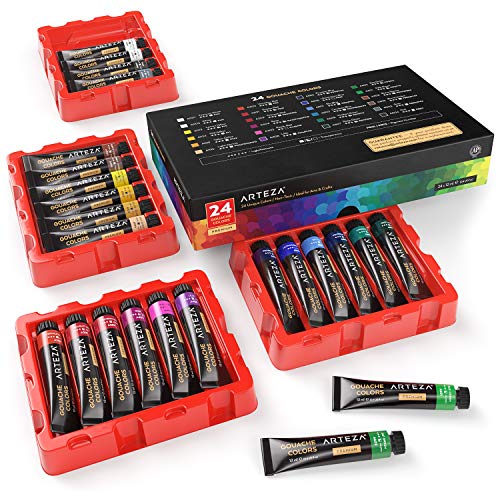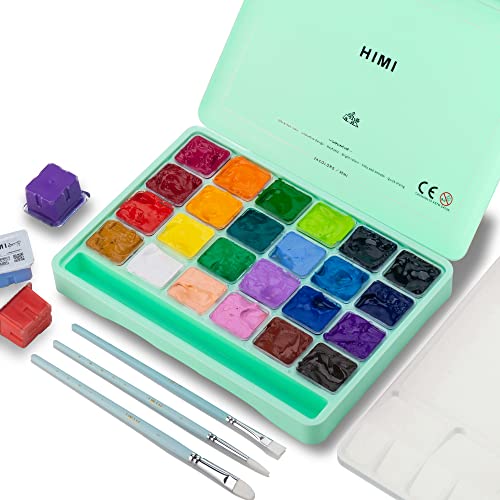Gouache, a lesser-known but incredibly versatile painting medium, has been a favorite choice among artists for centuries. Renowned for its vibrant colors, opaque qualities, and adaptability across various surfaces, gouache offers a unique bridge between watercolor and acrylic paints. In this article, we will explore the world of gouache paints for art, from their history and composition to techniques and the boundless artistic possibilities they unlock.
A Historical Glimpse
The origins of gouache can be traced back to ancient Egypt, where it was used for various purposes, including manuscript illumination and decorative arts. However, gouache as we know it today was perfected during the Renaissance period in Europe. Renaissance artists and illustrators turned to gouache for its vibrant colors and opacity, making it ideal for detailed illustrations, miniatures, and manuscript illumination. Over the centuries, gouache has continued to evolve and gain popularity among artists worldwide.
Characteristics of Gouache Paints
Gouache paints possess distinctive characteristics that set them apart from other painting mediums:
Opaque and Vivid: Gouache paints are highly opaque, offering rich and vibrant colors that cover underlying layers completely. This opacity allows artists to create bold, solid shapes and crisp details.
Water-Soluble: Like watercolor paints, gouache is water-soluble when wet, allowing artists to create translucent washes and gradients. However, unlike watercolors, gouache dries to a matte finish, maintaining its vibrant color intensity.
Reusable and Layerable: Gouache can be reactivated with water even after it has dried, making it a forgiving medium that allows artists to make corrections and adjustments. Artists can layer gouache to achieve a wide range of colors and tones.
Versatile Surfaces: Gouache can be applied to a variety of surfaces, including watercolor paper, illustration board, Bristol board, and even canvas. Its adaptability makes it suitable for different artistic styles and applications.
Precision and Detail: Gouache is well-suited for intricate and detailed work. It allows artists to create fine lines, highlights, and tiny details with precision.
Techniques and Creative Possibilities
Gouache paints offer a multitude of techniques and creative opportunities:
Layering: Gouache paints can be layered to create depth and richness in artwork. Artists can build up colors gradually, achieving a wide spectrum of hues and tones.
Blending: Gouache lends itself well to blending, allowing artists to achieve smooth transitions and gradients. Soft brushes, blending tools, or even fingers can be used to create soft edges and transitions.
Dry Brushing: Dry brushing involves using a nearly dry brush to apply gouache, creating fine, delicate strokes and adding texture or highlights to a piece.
Scumbling and Glazing: Artists can use gouache to create scumbling effects by applying a thin layer of opaque or semi-opaque color over a dry layer. Glazing with gouache involves applying transparent layers to enhance depth and luminosity.
Detailed Illustration: Gouache is a preferred medium for detailed illustrations, especially in fields like botanical art, scientific illustration, and book illustration.
Gouache paints, with their unique combination of opacity, vibrant colors, and water-solubility, continue to captivate artists and inspire creativity across the globe. Whether you are an experienced illustrator or a beginner venturing into the world of painting, gouache offers a medium that encourages experimentation, precision, and artistic expression.
As you pick up your brushes and gouache paints, remember that you are embracing a medium with a rich history and a world of artistic possibilities. Gouache empowers artists to create works that are both vibrant and detailed, offering a bridge between the transparent qualities of watercolors and the solid coverage of acrylics. It invites you to explore, experiment, and create art that is vivid, expressive, and uniquely yours. Gouache, in its versatility and timeless appeal, is an indispensable medium that brings art to life.


